Hypoallergenic Cat Breeds
Do you have a cat allergy? Do not fret, you’re not alone. It is estimated that 10 – 20% of the human population is allergic to cats. That is twice as common as dog allergy! Being hypoallergenic, in true sense means “ not having any allergens.” Sadly, there are no true hypoallergenic cat breeds. However, for all those looking for a friendly feline companion there are an array of minimal shedders and low Fel D1 allergen producers to choose from.
Our best Hypoallergenic kittens for sale:
1. The Siberian
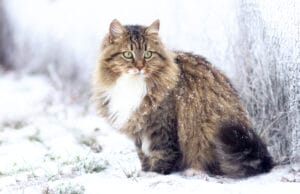
Don’t let their long fluffy coats fool you! If you’ve been tested allergic to Fel D1 protein, then this breed might be a good option! Siberian’s produce this protein at much lower levels than most other breeds. They are very affectionate and exceptionally playful, overall a joy to have around!
2. The Sphynx
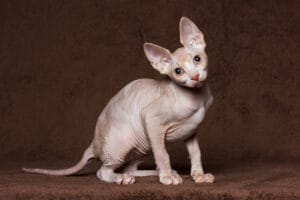
Although their appearance might seem quite daunting to some, this breed is very affectionate and loving. They are a hairless cat breed. However they require weekly bathes to remove excess oil production, frequent ear cleanings and special lotions for sun protection. This breed is a great recommendation, as they are likely to carry much less allergens on their coat than other breeds.
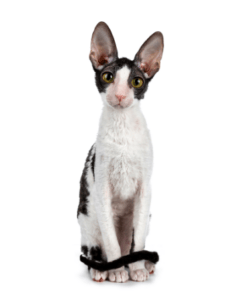
Their short curly coat has a suede feel to it, and is shed quite minimally. Having Siamese ancestry, this elegant breed is easy going and very playful.

This unique breed has quite striking features; long legs, oval face shape and large eyes (an alien perhaps?). Their short coat is curly, soft to touch and sheds very minimally.
5. The Donskoy
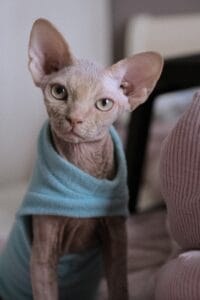
Another hairless breed, these svelte felines enjoy being the center of attention (no doubt in that!). Their peach fuzz coat which is soft to touch and sheds very minimally, make them just another great option!
6. The Balinese

These long haired Siamese beauties are similar in coat characteristics with the Siberian cat. They produce less Fel D1 allergen than most cats. They are communicative, friendly and crave company; they tend to get destructive when left home alone for long periods of time.
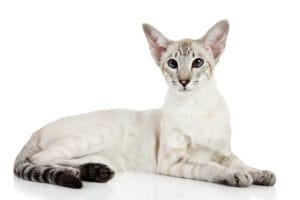
This willowy cat breed has an ancestry traced back to the Siamese. They are considered hypoallergenic as they produce less Fel D1 allergen ,which triggers allergies in humans. Athletic, tall and very intelligent; they are quick to adapt and demand attention.

Blues are minimal shedders, their silver double coat shed occasional over a period of two to three weeks. They are a independent, playful and interactive, but at times they are distant.
9. The Javanese
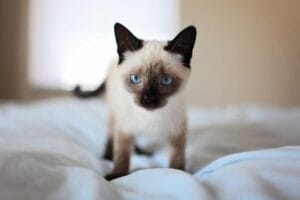
Also known as colourpoint longhair, this breed only has a single coat. They shed less due to their lack of undercoat. Their longhair is fine hair like in texture and lies close to
its body. Their blue alert eyes and extremely loving nature make them desirable pets. They get along well with other animals and form deep attachment with their owners ( they will likely be your new shadow or second one perhaps.)
10. The Bengal
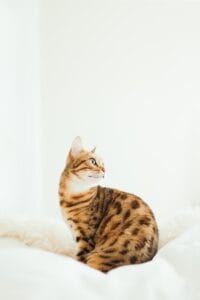
Known for their stunning leopard patterned coat.This athletic breed has a soft low maintenance coat which sheds very minimally. They are a loyal , playful and very active breed. They require an enriched environment to keep them busy throughout the day.
11. The Siamese

This talkative feline with their distinctive blue eyes, large ears and slim figure was once treasured by Asian royals. They are one of the oldest domesticated cat breeds. Although like most cats Siamese sheds regularly, they shed much less compared to most other breeds.

Sleek coat , shed minimally , related to siamese , vocal, highly intelligent can do tricks! Elegant felines with sleek short coats which shed minimally. They are highly intelligent and can be trained to do tricks. They are very vocal and will follow you around requesting constant attention.
13. The Korat
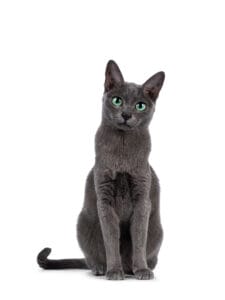
Their sweet heart shaped face shouldn’t beguile you of their bossy nature. Although they get along with other animals, they demand to be the center of attention. This fun breed has a short tight single coat which lies close to its body, and they shed minimally.
14. The Burmese
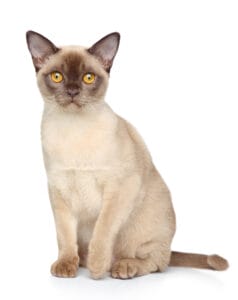
These sweet voiced sirens are very affectionate and get easily attached! They shed very minimally, as they are a small cat breed with a short single coat. They fully mature into their adult body around 2 – 3 years of age.
15. The Singapura
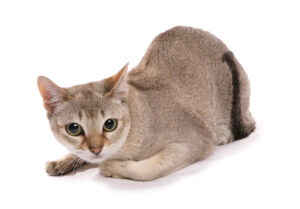
This hypoallergenic cat breed is one of the smallest in the world! They are moderate shedders; but taking their size into account, this shedding is quite minimal overall. These affectionate little felines love to curl up on their owners lap.
What are allergies?
In simple terms; an allergy is the body’s reaction to a foreign substance, an allergen. We can develop an allergy at any point in life. Our body’s immune system creates unique proteins called antibodies; these are programmed to recognize and react to foreign substances, even the ones we have been around our entire lives. When these antibodies react adversely to a foreign substance this is called sensitization. The next time the immune system recognizes and reacts to this foreign substance or allergen, this causes an allergic reaction with associated signs and symptoms.
What are allergens?
An allergen is any foreign substance that induces an allergic reaction. Most animal allergens are proteins; typically found in the saliva, skin, urine or feces and can be carried by hair or dander. These allergens are light weight hence remain suspended in air for a long period of time , eventually settling down. This suggests that animal allergens may remain in the environment for up to 6 months after the animal has been removed from the property.
Fel D1 : an important Cat allergen.
Fel D1 is the most common cat allergen, all cats produce this allergen regardless of their age, size, fur type etc. But this allergen is found in varying levels in different breeds, hence not all cat breeds are equally allergenic. Intact male cats tend to produce more Fel D1 than females and neutered males. There are no breeds which do not produce this allergen, hence hypoallergenic cats simply do not exist ( technically), although there are breeds that produce this allergen at very low levels.
Symptoms of pet allergy
Pet allergies usually manifest as respiratory, skin, and eye signs, which can be mild or severe. Mild signs include: runny nose, watery eyes, sneezing, rashes, itching etc. In severe cases an anaphylactic shock may occur; a person may experience severe itching, respiratory distress, shock or even death! The severity of the symptoms can be managed if the exposure to the allergen is decreased.
Keeping your cat after diagnosis
If your diagnosed with having a cat allergy, but is keen on keeping your feline companion around; here are some way to manage your allergy:
Cat related:
1) Change your cat’s diet to specific cat food that can neutralize Fel D1 and decrease the amount it is shed in saliva and body fluids.
2) Neuter your cat,as this is linked to decreased allergen production. Intact male cats are found to produce more Fel D1 than females.
3) Always wash your hands after handling your pet, limit your interactions with your pet.
4) Bathe your cat once a week, this has proven to decrease 84% of the allergen concentration found in your cat’s fur.
Environment related:
1) Restrict your cat’s movement to a selected few rooms in your house. Cat allergen being light weight is typically airborne and can persist for weeks in the environment.
2) Replace carpets, with polished floors ( wood, tile). Cat allergen can settle down on the carpet fibers, making it hard to clean out.
3) Vacuum regularly.
4) Use high temperatures while laundering clothes, bed spreads, carpets etc; to remove the allergen efficiently.
To manage your allergy, you could consider taking treatment depending on your symptoms. Mild symptoms can be treated with oral antihistamines and for respiratory symptoms, corticosteroid
or bronchodilator inhalants can be used. ( Consult your healthcare provider) Immunotherapy is also available in the form of “allergy shots”, which gradually build tolerance to
the allergen.
Even though removing the cat from your immediate surroundings is the best way to manage your cat allergy, it is a very hard decision to make. Consult with your healthcare provider in order to make the right decision for you.





















